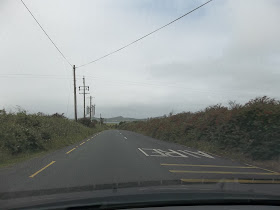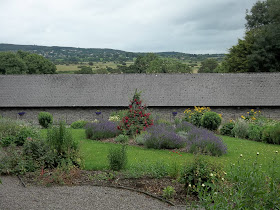Small part of the history of the castle from Wikipedia: Bunratty Castle (Irish: Caisleán Bhun Raithe, meaning "Castle at the Mouth of the Ratty") is a large tower house in County Clare, Ireland. It lies in the centre of Bunratty village (Irish: Bun Ráite), by the N18 road between Limerick and Ennis, near Shannon Town and its airport. The name Bunratty, Bun Raite (or possibly, Bun na Raite) in Irish, means the 'bottom' or end of the 'Ratty' river. This river, alongside the castle, flows into the nearby Shannon estuary. From the top of the castle, one can look over to the estuary and the airport.
The present structure was completed by the MacNamara family around 1425 and was briefly occupied by the Siodhachain (Sheehan) clan, but 50 years later was in the hands of the O'Briens, the most powerful clan in Munster.
In 1646, during the Irish Confederate Wars, Barnabas O'Brien, 6th Earl of Thomond, allowed a large English Parliamentary garrison to land in Bunratty. The castle was besieged and taken by the forces of Confederate Ireland under Donagh MacCarthy, Viscount Muskerry.
When Barnaby, or Barnabas O'Brien, 6th Earl of Thomond, left Bunratty for England in 1646 for his own safety, during the Confederate wars, he was the last member of the O'Brien Clan ever to reside in Bunratty Castle. He was actually christened Brian O'Brien, after his famous ancestor Brian Boru, but being a political gymnast, he preferred a more English appellation to appease the King, and to be socially acceptable in the climate of the time.
Bunratty Castle and its lands were granted to the Studdert family. They left the castle in 1804 (allowing it to fall into disrepair), to reside in the more comfortable and modern adjacent Bunratty House built by the family. The reasons for the move are bound up in family arguments over the eldest son marrying his first cousin.
For some time in the mid Nineteenth century the castle was used as a Barracks by the Royal Irish Constabulary,[2] the colonial era police force.
In 1954 the castle was purchased and restored by the 7th Viscount Gort. He reroofed the castle, which had no longer been lived in as much at the time, and saved it from ruin. |





































































